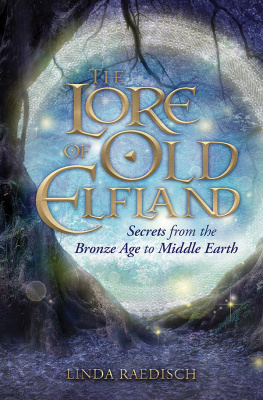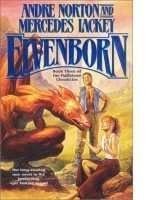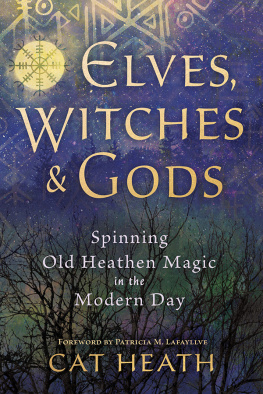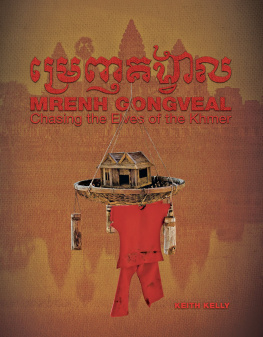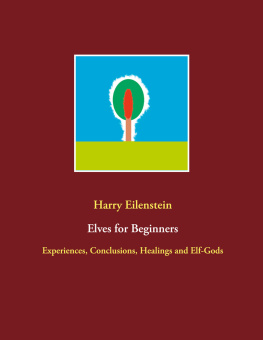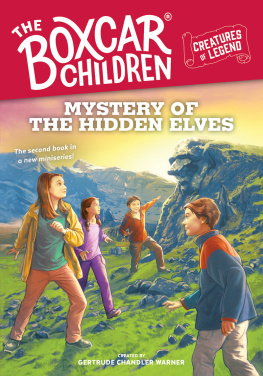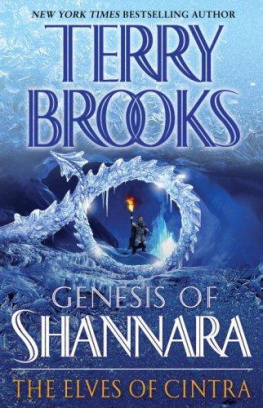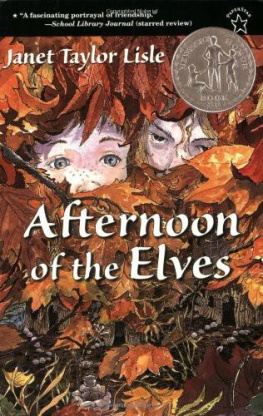
About the Author
Linda Raedisch is a papercrafter, soapmaker, and eclectic writer who loves to explore museums, grave mounds, and old coal sidings. She is conversant in German and is the author of Night of the Witches and The Old Magic of Christmas as well as numerous articles on folklore, herblore, and ancient religions. She lives in northern New Jersey.
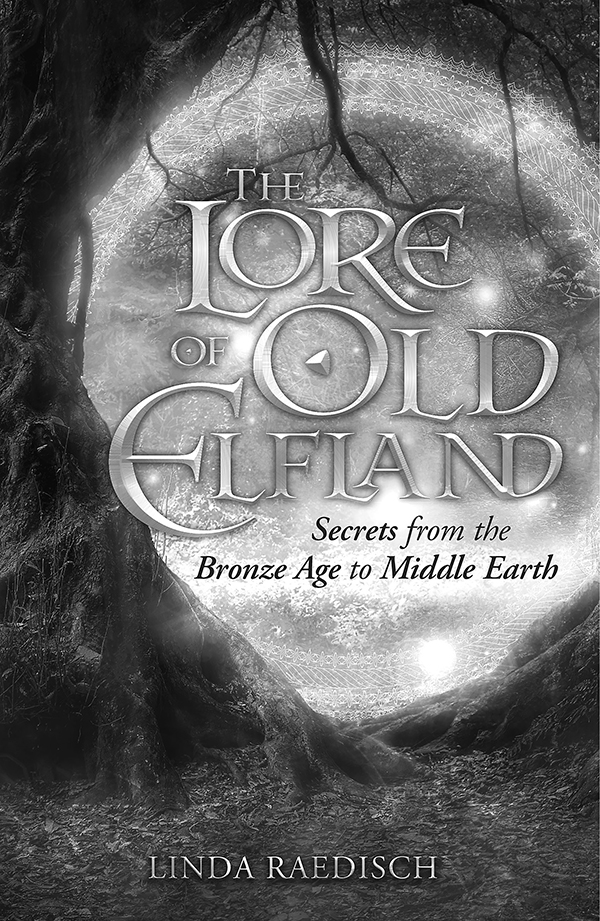
Llewellyn Publications
Woodbury, Minnesota
Copyright Information
The Lore of Old Elfland: Secrets from the Bronze Age to Middle Earth 2019 by Linda Raedisch.
All rights reserved. No part of this book may be used or reproduced in any matter whatsoever, including Internet usage, without written permission from Llewellyn Publications, except in the form of brief quotations embodied in critical articles and reviews.
As the purchaser of this e-book, you are granted the non-exclusive, non-transferable right to access and read the text of this e-book on screen. The text may not be otherwise reproduced, transmitted, downloaded, or recorded on any other storage device in any form or by any means.
Any unauthorized usage of the text without express written permission of the publisher is a violation of the authors copyright and is illegal and punishable by law.
First e-book edition 2019
E-book ISBN: 9780738758633
Book design by Samantha Penn
Cover design by Shannon McKuhen
Editing by Brian R. Erdrich
Interior illustrations by Wen Hsu
Project templates by Llewellyn Art Department
Llewellyn Publications is an imprint of Llewellyn Worldwide Ltd.
Library of Congress Cataloging-in-Publication Data (Pending)
Names: Raedisch, Linda, author.
Title: The lore of old elfland : secrets from the Bronze Age to Middle
Earth / Linda Raedisch.
Description: First edition. | Woodbury, Minnesota : Llewellyn Publications,
2019. | Includes bibliographical references and index. | Summary: This
masterful work of storytelling and scholarship explores the fascinating
history of elfland, sharing magical tales of elves and faeries from the
Old Norse sagas, little-known Danish ballads, classical folktales,
Tolkiens Mirkwood, and even personal, first-hand encounters. With
lovely recipes and crafts, this book also invites you to realize your
own vision of elfland-a vision that will fill your spirit with
mysterious wonders and strange delightsProvided by publisher.
Identifiers: LCCN 2019033969 (print) | LCCN 2019033970 (ebook) | ISBN
9780738758459 (paperback) | ISBN 9780738758633 (ebook)
Subjects: LCSH: ElvesFolklore.
Classification: LCC BF1552 .R34 2019 (print) | LCC BF1552 (ebook) | DDC
398.21dc23
LC record available at https://lccn.loc.gov/2019033969
LC ebook record available at https://lccn.loc.gov/2019033970
Llewellyn Publications does not participate in, endorse, or have any authority or responsibility concerning private business arrangements between our authors and the public.
Any Internet references contained in this work are current at publication time, but the publisher cannot guarantee that a specific reference will continue or be maintained. Please refer to the publishers website for links to current author websites.
Llewellyn Publications
Llewellyn Worldwide Ltd.
2143 Wooddale Drive
Woodbury, MN 55125
www.llewellyn.com
Manufactured in the United States of America
In memory of Marlene Raedisch (19642016)
Acknowledgments
Special thanks go to Familie Ernst and its spin-off, Familie Wedelborg-Witt; my mother Marion Meine Kche ist deine Kche Raedisch; the New Providence Memorial Library for their interlibrary loan service and pleasant views from the study tables; Louise Wheeler for fielding all those Swedish questions at five o clock in the morning; Ursula Raedisch for photographic interface transmittability; editor Elysia Gallo for taking a chance on an unpublished, unagented writer all those years ago; and to Brian Raedisch for taking me all those places where only elves and inquisitive little rat children go.
Contents
: Through Darksome Wood
: Black Hair, Blue Bones
: A Crossing of the Ways
: Lights in the Forest
: Durins Day
: Long Was the Making
: Glory of the Elves
: The Uttermost West
: An Elven Herbal
: All Aboard!
: A Guide to Elves, Elfkind, and Related Phenomena
Disclaimer
Any mention of herbs, herbal potions, or remedies outside the context of a recipe is meant for historical interest only. Neither the publisher nor the author take any responsibility for any possible consequences from any treatment, action, application of herb, or preparation to any person reading or following the information in this book.
Pronunciation Key
Of the many languages that appear in this book, I am fluent only in English and conversant German. Speakers of the ancient and modern Scandinavian languages will no doubt find fault with this key. It is not meant to impart fluency, only to help the reader muddle through.
Danish, Norwegian, and Old Norse : long o, as in lone. Swedish : awe as a British person rather than an American Midwesterner might pronounce it |
Swedish, German : long a as in eight |
Swedish : er. German : a little like the eu in the French word bleu |
German : like the French eu but with shades of the English expression of disgust, Ew! |
y | German, Danish, Norwegian, and Old Norse : like the German |
j | y as in yellow |
soft th as in thistle |
hard th as in the |
In t roduc t ion
A re elves real? I hope I will not disappoint you, dear reader, when I say that this question is immaterial to me. To be sure, my own ancestors of not so long ago believed in them, petitioned them, took precautions against them, and even considered the possibility of marrying and having children with them. I would like to believe that I myself have seen elves, but the more rational bits of my brain will concede only that elves are a fascinating subject, one worthy of a much deeper look than they are usually given today. Indeed, the elves have done so much to enrich our culture that it would be a little disingenuous, I think, to demand proof of their existence. If you yourself are a believer in elves, you might find my approach to them irreverent at times. I can only say that this is the attitude that comes naturally to me and that, so far, the elves, if they really are out there, have not had a problem with it.
Throughout this book, I have chosen the adjective elven over elfin because elfin has never fallen out of popular use and has come to mean delicate, diminutive, a word used to describe small children. Elves are not small children, though they have, in isolated incidents, appeared as such. The further back one traces the elven lineage, the taller the elves become, the branches of their family tree eventually winding themselves around those of the radiantly beautiful giants of Norse mythology.
Are elves the same as fairies? They are. I prefer the term elf simply because as a Disneyfied American child, I was conditioned early on to think of fairies as tiny ballerinas with wings. Ive since learned that the phenomenon can be either male or female and is far more complex, elusive and, yes, dangerous, than my coloring books had led me to believe. As a young adult, I continued to favor elf as I delved into the religious beliefs, literature, and archaeology of the ancient Germanic peoples. The word elf is of Germanic origin, while fairy, I learned, descends through French from the Latin fatum , fate. For speakers of Modern English, the terms overlap, but for the most part, fairy is the Celtic/Romance name for the being in question, and elf is the Germanica pleasingly tidy distinction and one I was able to enjoy for a long time.
Next page
